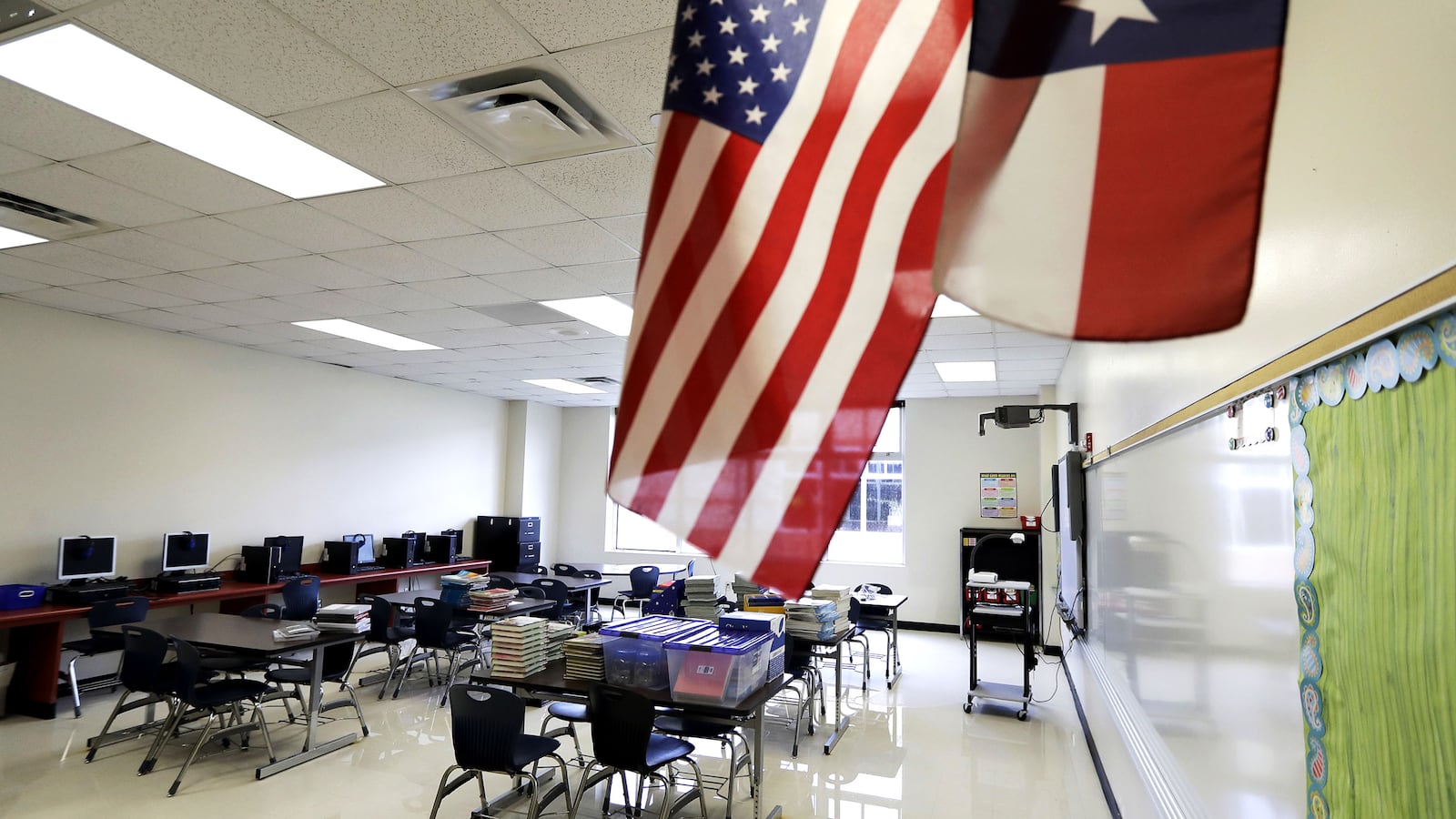As Houston’s school district of more than 200,000 students scrambles to repair damaged schools before classes begin next week, they must also plan for traumatized students to enter the classroom.
The Houston Independent School District is in the process of working with counsellors, nurses and social workers to develop a “mental health recovery plan” for the district’s hardest hit schools, according to a statement from HISD. In the meantime, Mental Health America of Greater Houston and volunteers like Stephanie Elizondo are stepping in.
“We’re just really trying to make sure they're processing what's going on as well as take their minds off of it,” Elizondo said.
Elizondo spent last week setting up her third-grade classroom for the first day of school. Now, she volunteers at an impromptu school for 30 children inside a church turned flood shelter.
Elizondo and the other volunteers at Church of the Apostles Houston divided the day into thirty minute segments filled with playtime and educational activities. Families sleep inside most of the church’s rooms so Elizondo and the other teacher volunteers must be creative with their space. They set up arts and crafts on tables outside and a yoga instructor coached mindfulness exercises on a raised platform. Science teachers also worked on projects with the older students.
Elizondo sees her temporary class as the first step in the healing process.
Symptoms of post traumatic stress can range from lack of focus and anxiety to acting out, and teachers need to be prepared, said Annalee Gully of Mental Health America of Greater Houston. If not, studies show that schools rely on harsh discipline when kids misbehave.
“We want make sure that these kids when they reenter school aren't labeled bad kids because of the trauma they've experienced,” said Gully.
And the sooner teachers begin working with students, the better, even if it means science class on a church patio or reading time in the two children’s areas Gully’s team created inside the George R. Brown Convention Center.
Janet Pozmantier, also with MHA Houston, works with local school districts on the first steps of recovery. While schools try to meet basic needs like providing food to families and cleaning out damaged buildings, Pozmantier sends information to teachers about recognizing the signs of trauma and connects schools with mental health professionals.
“There is nobody who has not experienced the trauma of going through the storm,” Pozmantier told The Daily Beast. “Many kids who are especially impacted by it will have challenges with sleep, nightmares. Anxiety will probably be sky high.”
Schools can offer an important space to heal, said Pozmantier. The inherent structure of the school day filled with predictable activities gives traumatized kids a sense of stability. Simple classroom changes like five minute warnings before a new activity helps children transition to a new task, and assigning students roles within the classroom can further build confidence.
Some teachers already incorporate these techniques in the classroom, Pozmantier said. She remembered when her daughter’s fifth-grade teacher gave every student a duty. One child sharpened pencils while another passed out books. Pozmantier said that these tasks give students a sense of control.
“Can you imagine how empowering those things are for kids?” Pozmantier said.
Elizondo teaches at-risk children at Janowski Elementary and she already uses many techniques that Pozmantier suggests. She lets students choose their own seats even if that means sitting on the carpet away from the group.
While Elizondo does not yet know the state of her school, it sits in a low lying neighborhood and floods during bad storms. Her students’ homes likely took damage, too. Elizondo wants to give them a space to work through their emotions.
“I can say I’m going to give them more hugs and let them know that I really care about them and that they are validated to feel whatever they're feeling.”
Most students should bounce back over the next few months, said Pozmantier, but those who don’t face a hard road.
Kids who experience repeat trauma often act out and are suspended and even arrested at a higher rate than children from stable environments, according to Morgan Craven, Director of the School-to-Prison Pipeline Project at the justice center Texas Appleseed. She said that across the country, schools over punish unruly students. Texas is no exception.
“Schools are relying on police and ticketing and courts to handle behavior,” Craven said.
The stress from a natural disaster can cause students to misbehave, putting them at risk for harsh punishment, said Craven. A study of student behavior following Hurricane Katrina showed that child survivors who changed school districts after the storm faced punishment more frequently than their peers. Both the trauma of the hurricane itself and years of struggle as families tried to find new homes and jobs contributed to behavioral problems and subsequent discipline.
Houston will be no different, said Craven.
“It’s not just immediate trauma of the natural disaster, it’s that following trauma as well that can last for years,” said Craven. “Many families are going to experience homelessness for some time following Harvey.”
Texas is aware of over discipline in schools. Gov. Greg Abbott signed a law in June banning out-of-school suspension of students below third grade in most situations. The Houston Independent School District also trains teachers to recognize early signs of emotional distress in students so they can intervene before the child acts out, said Elizondo.




